Dealing with Nasal Pimples: Causes, Symptoms, and Effective Remedies
Nasal pimples, also known as nasal vestibulitis, are a frequent issue that can be unpleasant and irritating. They frequently result from bacterial or fungal diseases and can appear inside or outside the nostrils. This blog will look at the causes, symptoms, and effective treatments for nasal pimples. If your nasal pimples do not improve after a few days of home treatment or if they cause substantial discomfort or difficulty breathing, you should consult a doctor. Your doctor might recommend antibiotics or other treatments to help treat the infection and lessen inflammation.
Understanding Nasal Pimples
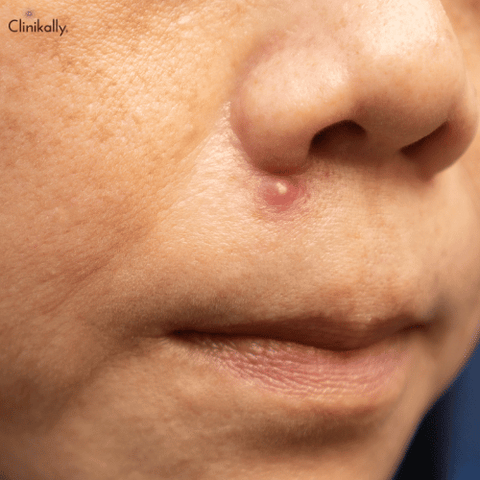
Nasal pimples, also known as nasal vestibulitis, are small, painful, red or white lumps on or within the nose. They may result from bacterial or fungal infections, itchiness from picking at or shaving the nose, allergic reactions, or hormonal changes, among other things. Nasal pimples can affect anyone, although teenagers and young adults are more likely to develop them. Hair follicles and oil glands line the nasal region, which can become infected or irritated, resulting in the formation of a pimple. Staphylococcus aureus and Streptococcus pyogenes are two common causes of nasal pimples.
These bacteria can enter the nasal area by a variety of routes, including touching the nose with dirty hands, using dirty or infected nasal sprays or other products, or practicing poor hygiene. Redness, swelling, soreness, itching, or a burning sensation around the affected area are all symptoms of nasal pimples. If the pimples become large or clog the nostrils, they can create a crust or scab and cause discomfort or difficulty breathing. Warm compresses, saline solutions, topical therapies such as antibiotic creams or ointments, or essential oils may be used to treat nasal pimples. To prevent the spread of bacteria and the development of nasal pimples, maintain proper hygiene and avoid touching your nose with dirty hands. It’s important to see a doctor if nasal pimples do not go away after a few days of home treatment or if they are significantly uncomfortable or make it difficult to breathe. In order to help clear the infection and lessen inflammation, your doctor might recommend antibiotics or other medicines.
Inflammation and Bacterial Infection
Numerous things, such as allergies, irritants, and infections, can lead to inflammation. Inflammation in the nasal area can cause hair follicles and oil glands to become inflamed, resulting in pimple production. Inflammation can also cause pimples to become red, swollen, and painful in some circumstances. Another typical cause of nasal pimples is a bacterial infection. Bacteria can enter the nasal area through a variety of routes, including touching the nose with dirty hands, using contaminated nasal sprays or other products, or practicing poor hygiene. When bacteria penetrate the nasal area, they can infect the hair follicles and oil glands, causing pimples to form.
The most prevalent bacteria that cause nasal pimples are Staphylococcus aureus and Streptococcus pyogenes. These bacteria are capable of causing a wide range of illnesses, from mild skin infections to more serious conditions including cellulitis and sepsis. It is critical to maintain proper hygiene and avoid touching the nose with filthy hands to avoid the formation of nasal pimples caused by irritation or bacterial infection. If you do acquire nasal pimples, you must treat them as soon as possible to prevent the infection from spreading and creating more serious symptoms.
Common Causes of Pimples Inside the Nose
Nasal vestibulitis, also known as pimples inside the nose, can have a variety of causes. Some of the most frequent causes are as follows:
- Bacterial infection: The bacterium Staphylococcus aureus is a common cause of nasal pimples. Bacteria can enter the nose via hair follicles or small cuts within the nose.
- Ingrown hairs: Ingrown hairs inside the nose can cause irritation and inflammation, resulting in pimple formation.
- Nasal hair removal: Plucking or trimming nasal hair can cause damage to the hair follicles, resulting in inflammation and pimple formation.
- Allergies: Allergies can cause nasal inflammation, resulting in pimples inside the nose.
- Changes in hormones: Changes in hormones can result in an increase in sebum production, which can clog pores and result in pimples.
- Poor hygiene: Poor hygiene can cause a build-up of bacteria and dirt inside the nose, which can result in the development of pimples.
- Medication: Some medications can dry out and irritate the nose, which can result in the growth of pimples.
To discover the most effective treatment for nasal pimples, the underlying reason must be identified. Most nasal pimples can be treated at home with home remedies such as warm compresses and saline sprays. However, if the pimples are bothering you or giving you pain, you should get medical assistance to rule out any underlying diseases or infections.
Types of Nasal Pimples
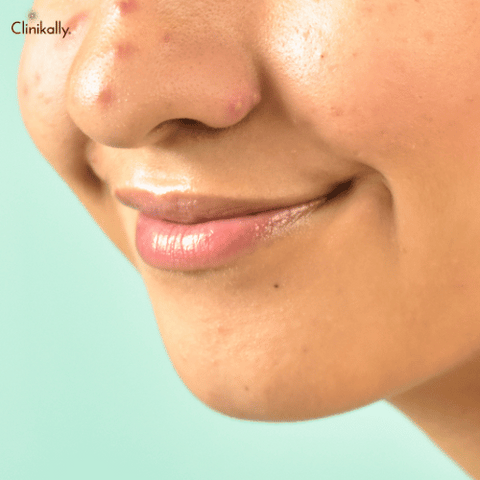
The inside of the nose may develop any number of different types of pimples. The most typical types include:
- Folliculitis: This kind of pimple develops when a hair follicle contracts a bacterial infection. It can result in the formation of tiny, red bumps or whiteheads inside the nose.
- Furuncles: Furuncles, also known as boils, are larger, painful pimples that form when an infection spreads to nearby tissue. They can be extremely painful and necessitate medical attention.
- Cysts: Deep, uncomfortable zits that can develop inside the nose are known as cysts. They can be difficult to treat on your own because an obstruction in the oil glands causes them.
- Nasal polyps: Noncancerous growths that can form inside the nose are known as nasal polyps. They have the potential to cause nasal congestion and are occasionally mistaken for pimples.
- Acne vulgaris: A prevalent skin condition that can affect the nose as well as other parts of the face, acne vulgaris can affect the nose. It can lead to the formation of blackheads, whiteheads, and pimples inside the nose.
Regardless of the type of nasal pimple, it is critical to avoid picking or popping the pimple because this can spread the infection and produce more severe symptoms. If the pimple causes substantial discomfort or persists after a home cure, get medical assistance to rule out any underlying diseases or infections.
Folliculitis and Ingrown Hairs
Folliculitis, which develops when hair follicles become infected with bacteria, is a common cause of nose pimples. When hair follicles become irritated or inflamed, the hair may grow incorrectly or become ingrown, resulting in the creation of pimples. Ingrown hairs form when hair coils back or grows horizontally into the skin instead of upward and outward. When hair is shaved, waxed, or plucked, as well as when hair follicles become clogged with oil, dead skin cells, or bacteria, this can occur. Ingrown hairs can result in red, raised bumps that look like pimples.
It is critical to keep the region clean and dry when treating folliculitis and ingrown hairs within the nose and to avoid picking or squeezing the pimples. Warm compresses applied to the affected area might help reduce inflammation and facilitate healing. Saline nasal sprays can also aid in keeping the nasal passages clean and decreasing the chance of infection. It is critical to seek medical assistance if the pimples are persistent or causing substantial discomfort. To treat a bacterial infection, a doctor may prescribe antibiotics or topical or oral treatments to reduce inflammation and aid healing. In severe situations, a pimple incision and drainage may be required.
Nasal Furuncles and Nasal Vestibulitis
Nasal furuncles and nasal vestibulitis are two types of bacterial infections that can cause nasal pimples. Nasal furuncles are painful, deep boils that occur when a hair follicle becomes infected with bacteria, most commonly Staphylococcus aureus. They can cause significant pain and suffering, as well as fever and other infection-related symptoms.
In contrast, nasal vestibulitis is an infection that affects the nasal vestibule, which is the area just inside the nostrils. It can cause skin redness, swelling, and tenderness, as well as the formation of small, painful pimples or scabs. It is caused by bacteria such as Staphylococcus aureus and is frequently associated with dry nasal passages or irritation from nose picking or blowing.
It is critical to keep the affected area clean and dry when treating nasal furuncles and nasal vestibulitis. Warm compresses can help relieve pain and inflammation, and topical antibiotics or antiseptics may be prescribed to reduce infection risk. In more severe cases, oral antibiotics may be required. It’s important to avoid picking or squeezing the pimples, as this can cause the infection to spread and lead to more severe symptoms. If the pimples are persistent or causing significant discomfort, it’s important to seek medical attention.
Home Remedies and Treatments

There are several home remedies and treatments that can help relieve nasal pimple symptoms and promote healing. Here are a few of the most effective alternatives:
- Warm Compress: Applying a warm compress to the affected area can aid in the reduction of inflammation and the promotion of healing. Simply soak a clean cloth in warm water, wring it out, and apply it to the affected area for 10-15 minutes at a time.
- Saline Solution: Nasal sprays containing saline can help keep nasal passages clean and reduce the risk of infection. You can buy saline sprays at your local drugstore or make your own by dissolving 1/2 teaspoon of salt in 8 ounces of warm water.
- Tea Tree Oil: Tea tree oil has antibacterial properties that can aid in the fight against infection and inflammation. Apply a few drops of tea tree oil to the affected area with a cotton swab after mixing it with a carrier oil such as coconut oil or olive oil.
- Aloe Vera: Aloe vera has anti-inflammatory and antimicrobial properties that can aid in the reduction of inflammation and the fight against infection. Apply a small amount of aloe vera gel to the affected area with a cotton swab.
- Apple Cider Vinegar: Apple cider vinegar contains antimicrobial properties that can aid in infection prevention. Apply the solution to the affected area with a cotton swab after combining equal parts apple cider vinegar and water.
While these home remedies can be effective, they may not be sufficient to treat more severe cases of nasal pimples or infections. It is critical to seek medical attention if your symptoms are persistent or cause significant discomfort. A doctor may prescribe antibiotics or other medications to help reduce inflammation and promote healing.
Warm Compresses and Topical Antibiotics
In addition to the home remedies mentioned previously, there are a few other treatments that can be effective in treating nasal pimples.
- Warm compresses: Applying warm compresses to the affected area can help reduce inflammation, promote drainage, and relieve pain. Soak a clean cloth in warm water, wring it out, and apply it to the affected area for 10-15 minutes at a time, several times a day.
- Topical Antibiotics: If your nasal pimple is infected, your doctor may prescribe a topical antibiotic cream or ointment. This can aid in the fight against the infection and reduce inflammation. Even if the symptoms appear to have resolved, it is critical to continue taking the medication for the full prescribed duration.
- Over-the-Counter Pain Relievers: Ibuprofen or acetaminophen, for example, can help relieve pain and reduce inflammation associated with nasal pimples. Before beginning any new medication, it is critical to read the label and consult with your doctor.
- Proper hygiene: keeping the affected area clean and dry can help prevent further infection and promote healing. Wash your hands frequently, avoid touching your nose, and clean the area around your nostrils with a clean, gentle facial cleanser.
If your symptoms persist or worsen despite home remedies and over-the-counter medications, it’s time to see a doctor. Your doctor may advise you to undergo additional tests or procedures in order to determine the underlying cause of your nasal pimples and develop an appropriate treatment plan.
Nasal Hygiene and Skin Care Tips
In addition to the treatments mentioned previously, the following nasal hygiene and skin care tips can aid in the prevention and management of nasal pimples:
- Keep your nose clean: Keeping your nose clean can help prevent the build-up of oil, dirt, and bacteria that can cause pimples. To wash the area around your nostrils, use a gentle facial cleanser and avoid using harsh soaps or scrubs that can irritate the skin.
- Avoid touching your nose: Touching your nose can transfer bacteria from your hands to your skin, increasing the risk of infection. Try not to touch your nose, and if you must, thoroughly wash your hands first.
- Use a humidifier: Dry air can irritate the skin and increase the likelihood of nasal pimples. Using a humidifier can help keep the air moist, reducing irritation and preventing the formation of pimples.
- Avoid picking or squeezing pimples: Picking or squeezing pimples can aggravate their inflammation and raise the risk of infection. If you have a pimple on your nose, try not to pick at it.
- Avoid touching your face: Touching your face, especially around your nose and mouth, can transfer bacteria to your skin and increase your risk of infection. Try not to touch your face, and if you must, wash your hands first.
- Avoid greasy or oily products: greasy or oily products, such as makeup, can clog pores and increase the risk of pimples. If you do use these products, make sure to thoroughly remove them before going to bed.
By following these nasal hygiene and skincare tips, you can help prevent and manage nasal pimples while also keeping your skin healthy and clear.
When to Consult a Medical Professional
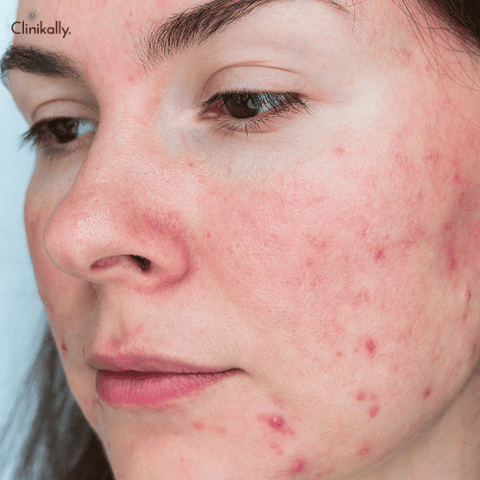
While most nose pimples can be treated at home with over-the-counter or natural medicines, in other circumstances, a medical professional may be required. Here are some symptoms for which you should consult a doctor about your nasal pimples:
- If the pimple is painful and does not respond to home remedies: If your nasal pimple is causing significant pain or discomfort and does not improve with home remedies, you should seek medical attention. Your doctor may be able to recommend stronger medications or other treatments.
- If the pimple is accompanied by other symptoms: If you experience other symptoms, such as fever, chills, or difficulty breathing, in addition to your nasal pimple, you should seek medical attention right away. These symptoms could indicate a more serious infection that necessitates immediate treatment.
- If the pimple is large or appears to be growing rapidly: If your nasal pimple is large or appears to be growing rapidly, it could be a sign of a more serious infection or a tumor. In this case, it is critical to seek medical attention to determine the cause and appropriate treatment.
- If your immune system is compromised: If your immune system is compromised as a result of a disease or medication, you may be more prone to infections and need treatment for your nasal zit.
In general, it is always a good idea to speak with a medical professional if you have concerns about your nasal pimple or are unsure of how to treat it. They can offer a precise diagnosis and suggest the most appropriate course of action for your particular needs.
Persistent Symptoms or Worsening Condition
If your symptoms linger or your condition worsens despite home cures, it is critical that you visit a medical expert. This could be an indication of a more serious underlying disease that necessitates medical treatment. The following are persistent nasal pimple symptoms:
- Pain or discomfort that does not improve with over-the-counter medications
- Redness and swelling that spreads to other parts of the face
- Chills or fever
- Breathing difficulties or shortness of breath
- Consistent pimple drainage or discharge
These symptoms could be the result of a more serious infection or an underlying medical problem that necessitates immediate medical attention. A medical practitioner can assess your illness, make an accurate diagnosis, and offer the best treatment for your individual situation. Persistent symptoms may potentially indicate a more serious illness, such as an abscess or a cyst, which may necessitate surgical intervention. If you have any chronic symptoms or if your illness worsens despite home cures, you should seek medical attention.
Seeking Proper Diagnosis and Treatment
If you have nasal pimples or any other similar symptoms, it is critical that you obtain the correct diagnosis and treatment from a medical practitioner. Your doctor or dermatologist can inspect the affected area, establish the source of your nasal pimples, and offer the best treatment. The following are some common treatments for nasal pimples:
- Warm compresses: Applying warm compresses to the affected area can help reduce inflammation and speed up healing.
- Topical antibiotics: To help fight infections, your doctor may prescribe topical antibiotics that you can apply directly to the affected area.
- Oral antibiotics – If a bacterial infection is the root of your nasal pimples, your doctor may recommend oral antibiotics to help treat the infection.
- Saline rinses – Using saline rinses or nasal sprays can help clear the nasal passages of bacteria and other irritants.
- Antifungal medications: If a fungal infection is to blame for your nasal pimples, your doctor may recommend antifungal medications to help treat the infection.
- Corticosteroids: If swelling and inflammation are the root causes of your nasal pimples, your doctor may recommend corticosteroids to help.
Even if your symptoms get better, it’s crucial to follow your doctor’s treatment recommendations and to keep taking any prescribed medications until the recommended time has passed. Furthermore, avoiding triggers and practicing good nasal hygiene can help stop further nasal pimple outbreaks.
Preventive Measures for Nasal Pimples

Preventive steps can help lower the probability of nose pimples developing. Here are some pointers that might be useful:
- Keep your nose clean: Maintaining a clean nose interior free of bacteria and other irritants is crucial. To clear your nasal passages and lower your risk of infection, use saline sprays or nasal rinses.
- Avoid irritants: Some irritants, such as smoke, dust, and chemicals, can irritate your nasal passages and raise your risk of getting acne. Avoid being around these irritants if you can.
- Practice good hygiene: Wash your hands frequently and avoid touching your nose or face to prevent the spread of bacteria.
- Use gentle skin care products: Avoid using harsh soaps and face care products that can irritate the skin and increase the likelihood of developing acne.
- Use a humidifier: Dry air can irritate your nasal passages and raise your chance of getting acne. A humidifier can help keep the air moist and reduce the risk of irritation.
- Manage your stress: Stress can impair your immune system and raise your likelihood of getting acne. Try using relaxation methods, exercise, or other stress-relieving activities to manage your stress.
You may be able to lower your risk of getting nasal pimples and maintain the health and irritation-free condition of your nasal passages by adhering to these preventive measures. If you develop nasal pimples, seek immediate medical attention to avoid complications and ensure proper treatment.
Practicing Good Nasal Hygiene
Good nose hygiene is essential for keeping your nasal passages healthy and preventing the formation of nasal pimples. Here are some pointers to help you maintain proper nasal hygiene:
- Use a saline rinse: Saline rinses can help flush out irritants, bacteria, and other debris from your nasal passages. You can rinse your nasal passages with a saline nasal spray.
- Blow your nose gently: Blowing your nose too hard can irritate the lining of your nasal passages and increase your risk of developing nasal pimples. Use a gentle technique and refrain from blowing your nose too hard.
- Avoid picking your nose: Picking your nose increases the risk of infection and inflammation by introducing bacteria and other irritants into your nasal passages. Avoid picking your nose, and if it’s necessary, clear your nasal passages with a tissue or a nasal aspirator.
- Keep your hands clean: Wash your hands frequently to prevent bacteria and other germs from spreading to your nose and face.
- Moisturize your nasal passages: Dry air can irritate your nasal passages, increasing the likelihood of nasal pimples. A nasal moisturizer or humidifier can help keep your nasal passages moist and reduce irritation.
- Avoid irritants: Stay away from substances that can irritate your nasal passages and raise your risk of getting nasal pimples, such as smoke, dust, and chemicals.
You can maintain good nasal hygiene and lower your risk of getting nasal pimples by heeding these recommendations. In order to avoid complications and ensure proper treatment, make sure to seek immediate medical attention if you experience nasal pimples or other symptoms.
Avoiding Triggers and Irritants
An important step in preventing the emergence of nasal pimples is avoiding triggers and irritants that can cause nasal inflammation and irritation. The following advice will assist you in avoiding these triggers:
- Tobacco smoke: Avoid tobacco smoke exposure, whether from smoking or second-hand smoke. Tobacco smoke can irritate your nasal passages, increasing your chances of getting nasal pimples.
- Allergens and dust: Keep your home clean and free of dust and allergens like pet dander and pollen. To reduce your exposure to these irritants, use a vacuum with a HEPA filter and change your air filters on a regular basis.
- Chemical irritants: Avoid using cleaning products, solvents, and perfumes that contain chemicals that can irritate your nasal passages. When working with these chemicals, wear protective equipment and avoid using them in enclosed spaces.
- Extreme temperatures: Being exposed to extremely hot or cold temperatures can irritate your nasal passages and raise your risk of getting nasal pimples. Avoid drastic temperature changes and attempt to maintain a moderate temperature.
- Spicy foods: Eating spicy foods can irritate and inflame your nasal passages, which increases your risk of getting nasal pimples. Eat spicy foods in moderation or avoid them altogether.
You can lessen your risk of getting nasal pimples and other nasal conditions by recognizing and staying away from these triggers and irritants. If you do experience symptoms, make sure to see a doctor right away so that you can be properly diagnosed and treated.
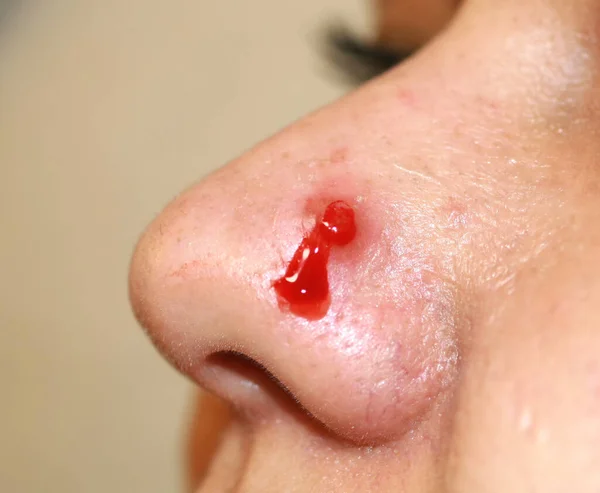


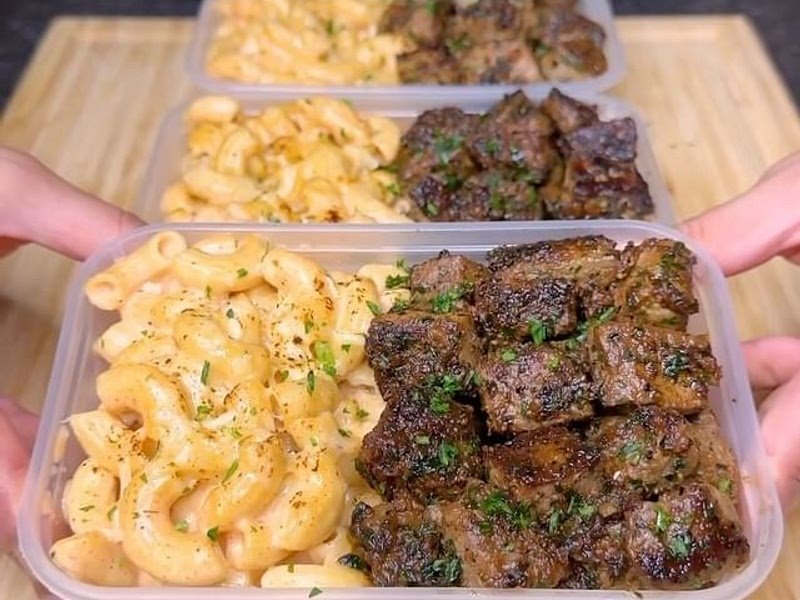




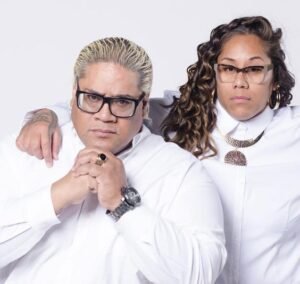





Post Comment